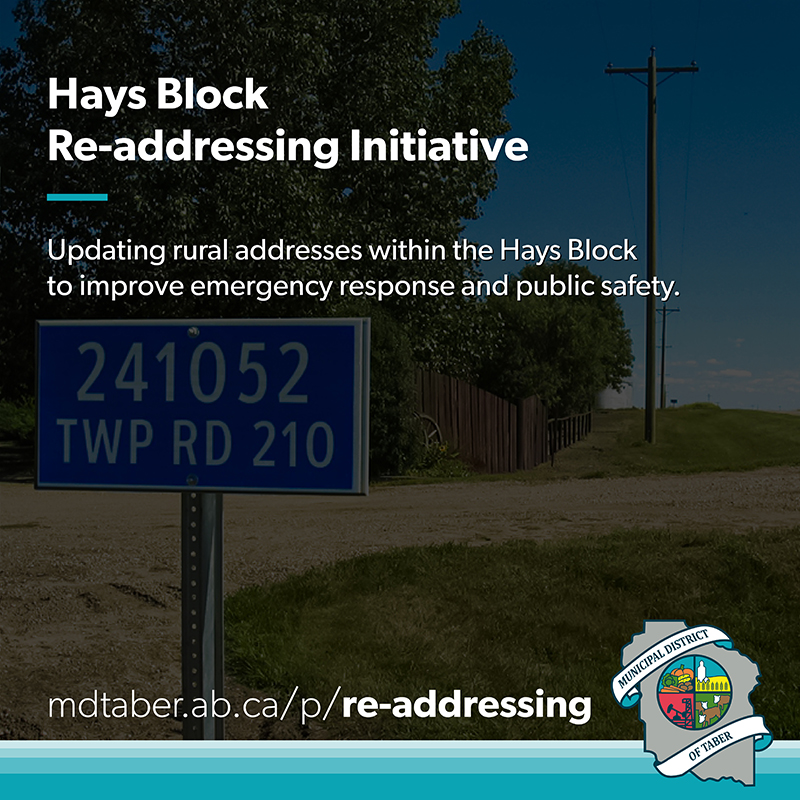What is Emergency Management?
Emergency Management is the ongoing process of planning and allocating resources to prevent, prepare for, respond to, and recover from disasters. A disaster is an emergency that exceeds the community's resources.
There are four phases of Emergency Management
- Prevention - actions taken to prevent or mitigate the impact of disasters (reduce risk).
- Preparedness - measures taken by individuals and communities to prepare for the occurrence of a hazardous event.
- Response - timely and effective actions taken during an event, such as emergency response and using the SCAR Notification System if necessary.
- Recovery - the process of returning to a "normal" state after a disaster has occurred. This would include rebuilding a community.
The Municipal District of Taber is prepared; staff and community members are trained in emergency management roles and responsibilities, and relationships are continually being fostered with community groups. MD of Taber also works closely with industrial and mutual aid partners on emergency and response plan training exercises.
Learn more about Emergency Management Bylaw No 1959.
During an emergency, dial | 9-1-1 |
For non-emergencies
Please call 403-223-3541
Be prepared
Below is a list of helpful links to preparedness materials from the Alberta Emergency Management Agency.
- Alberta Wildfires – Find the status and location of wildfires, fire restrictions and bans, and learn more about wildfire prevention, operations, and careers.
- Tornadoes and extreme winds – Tornadoes are common in Alberta. Learn how to protect yourself and your loved ones.
- Flood preparedness – Learn about floods and what you can do to protect yourself and others.
- Power outages – Learn about power outages and what you can do to protect yourself and others.
- Thunderstorms, lightning, heavy rai,n and hail – Learn about storms and ways you can protect yourself and your loved ones.
- Blizzards, freezing rain, ice storms, and extreme cold – Learn about blizzards and extreme cold conditions and what you can do to protect yourself and others.
- Build an emergency kit – Lists and information about what to include in your emergency kit and in your home to sustain you and your household for unexpected situations.
- Pet preparedness – Learn how to keep your pet safe and comfortable before, during, and after an emergency.
- Farm animals and livestock preparedness – Learn how to keep your farm animals and livestock safe in the event of an emergency or disaster.
- Resources for your community – 60-second videos – fact sheets, posters, and more material you can share on how to be better prepared for emergencies and disasters.
- Make an emergency plan – includes an emergency preparedness guide, tips on how to communicate during an emergency, and information relating to pets, children, and a guide for people with disabilities.
- Emergency preparedness – includes hazard info and general emergency preparedness information, including shelter-in-place and evacuation fact sheets.
- FireSmart – FireSmart teaches residents and stakeholders how to mitigate the risks and impacts of fires that affect communities and infrastructure.
- Wildfire insurance coverageWildfire insurance coverage – Insurance Bureau of Canada
- Additional living expenses – Insurance Bureau of Canada
